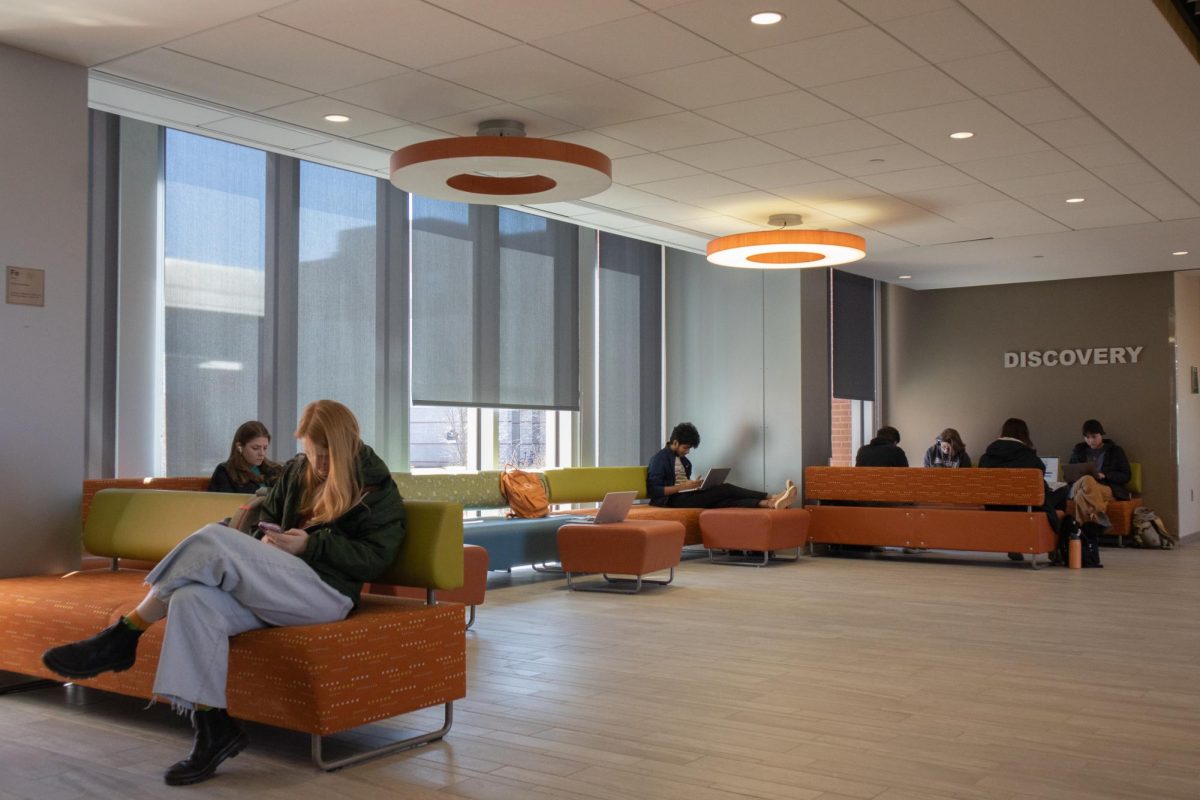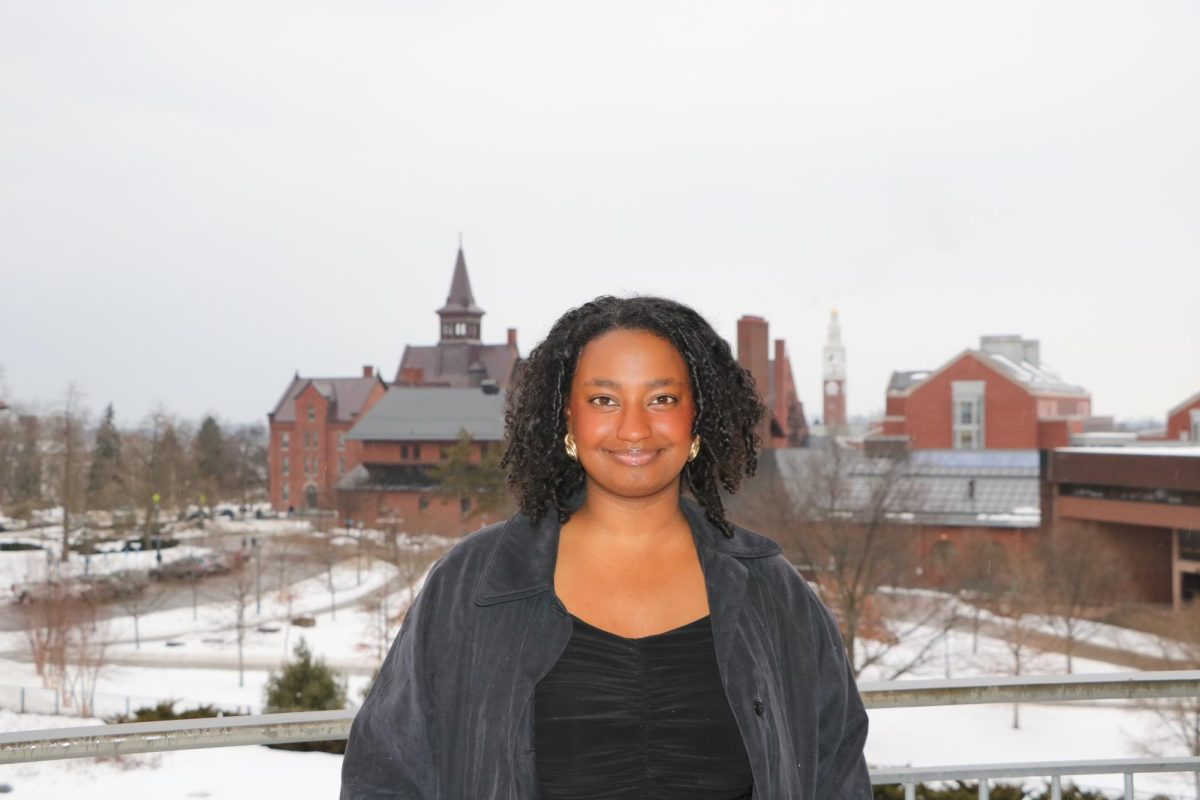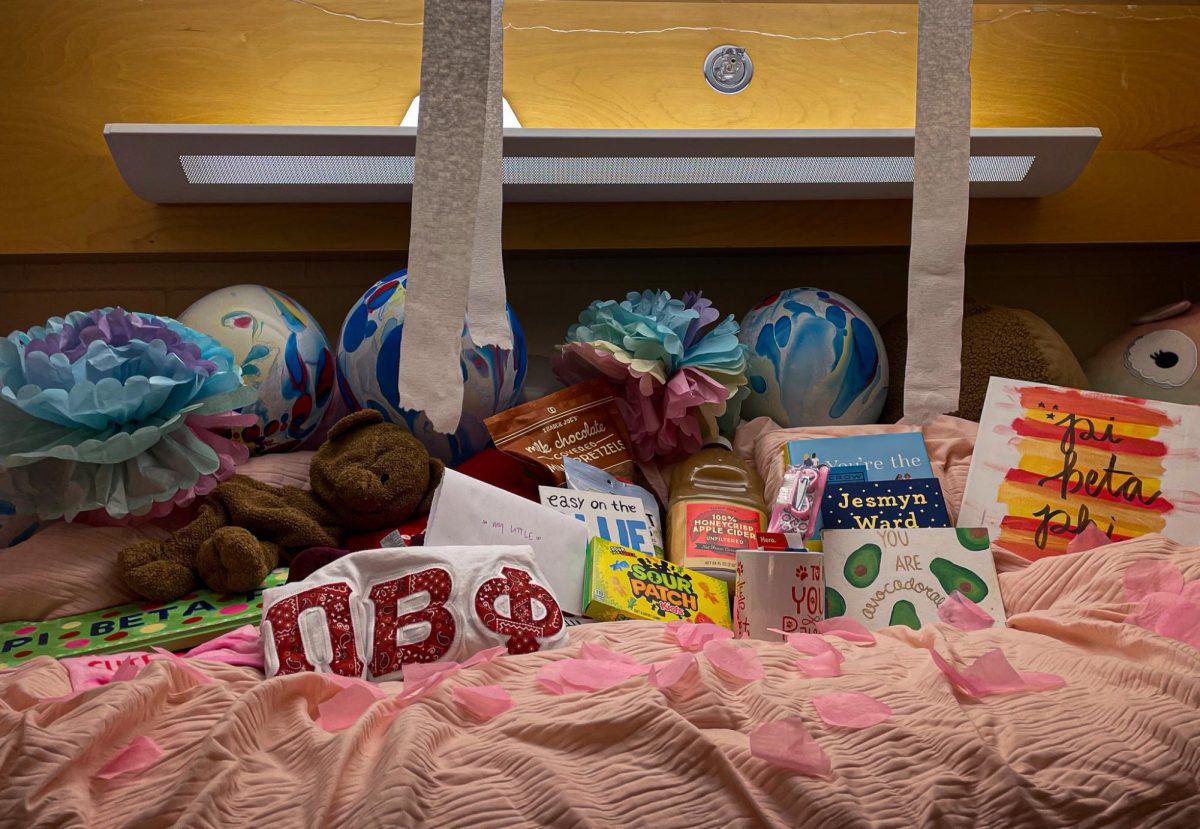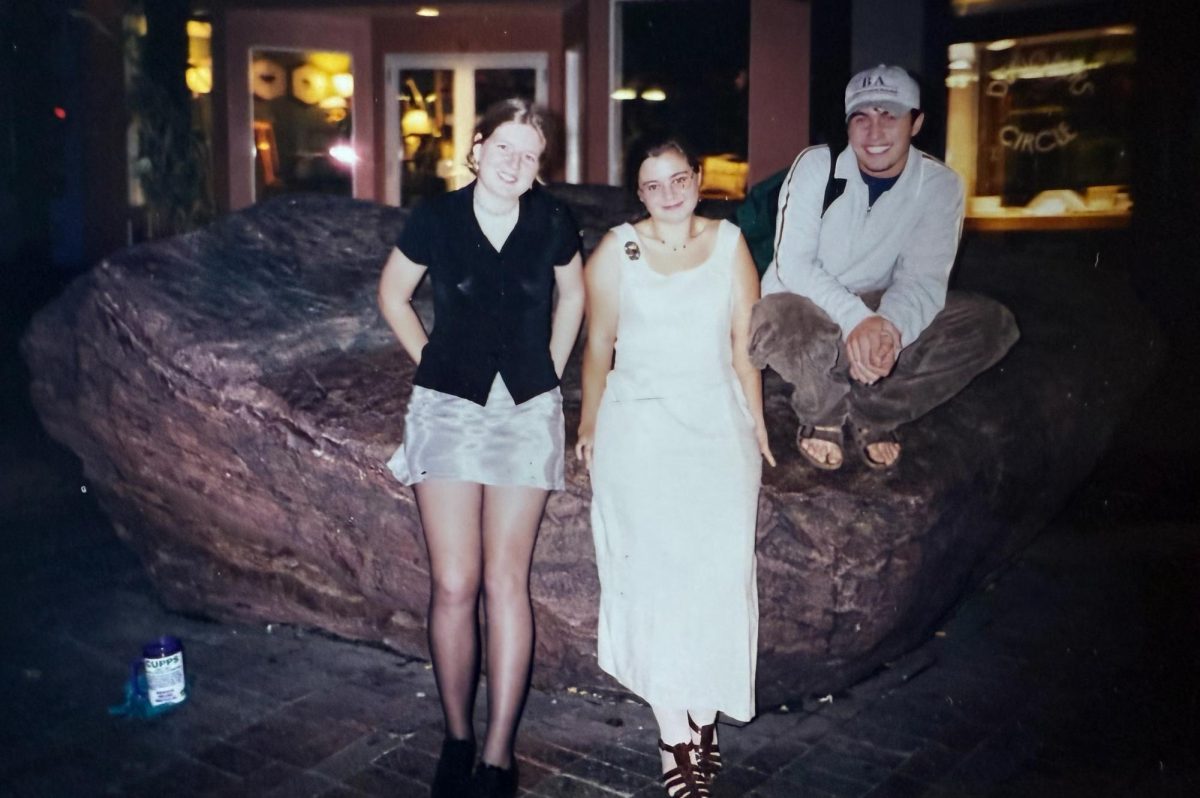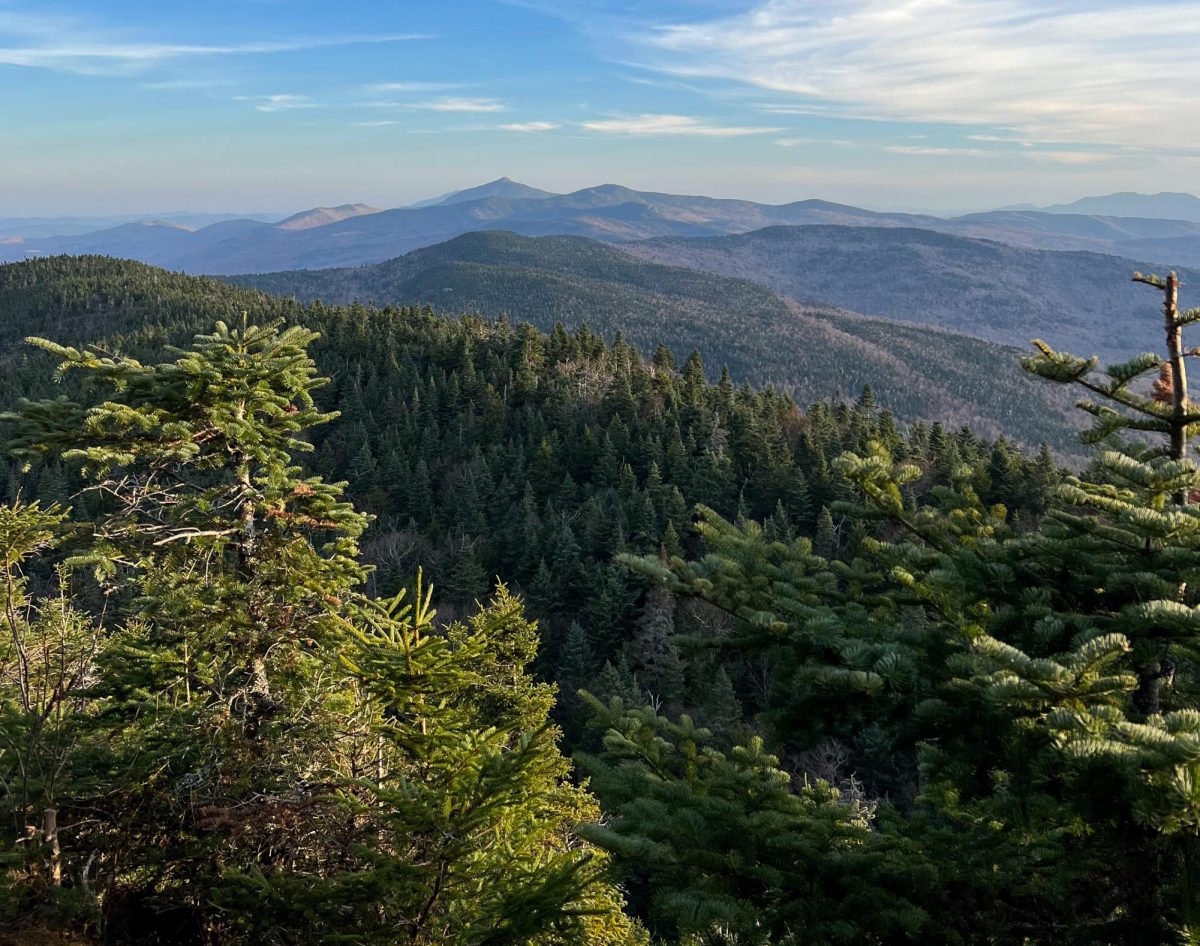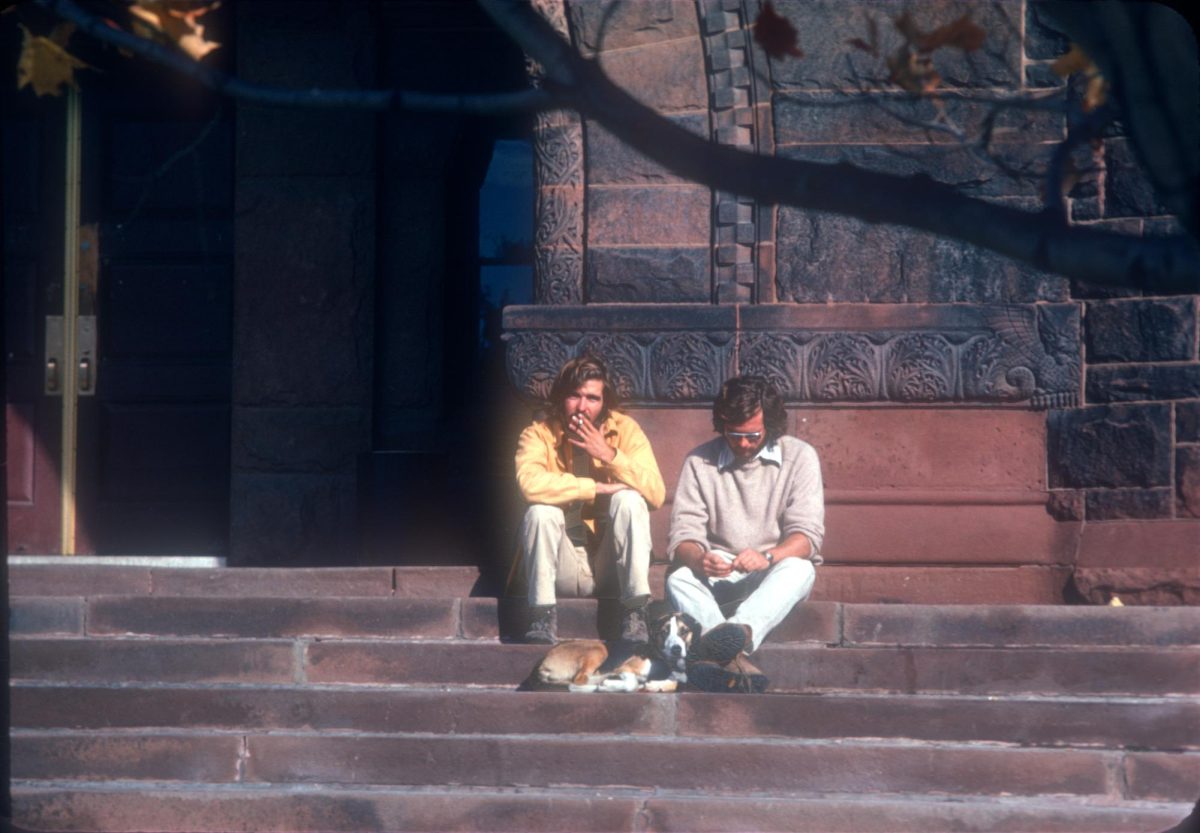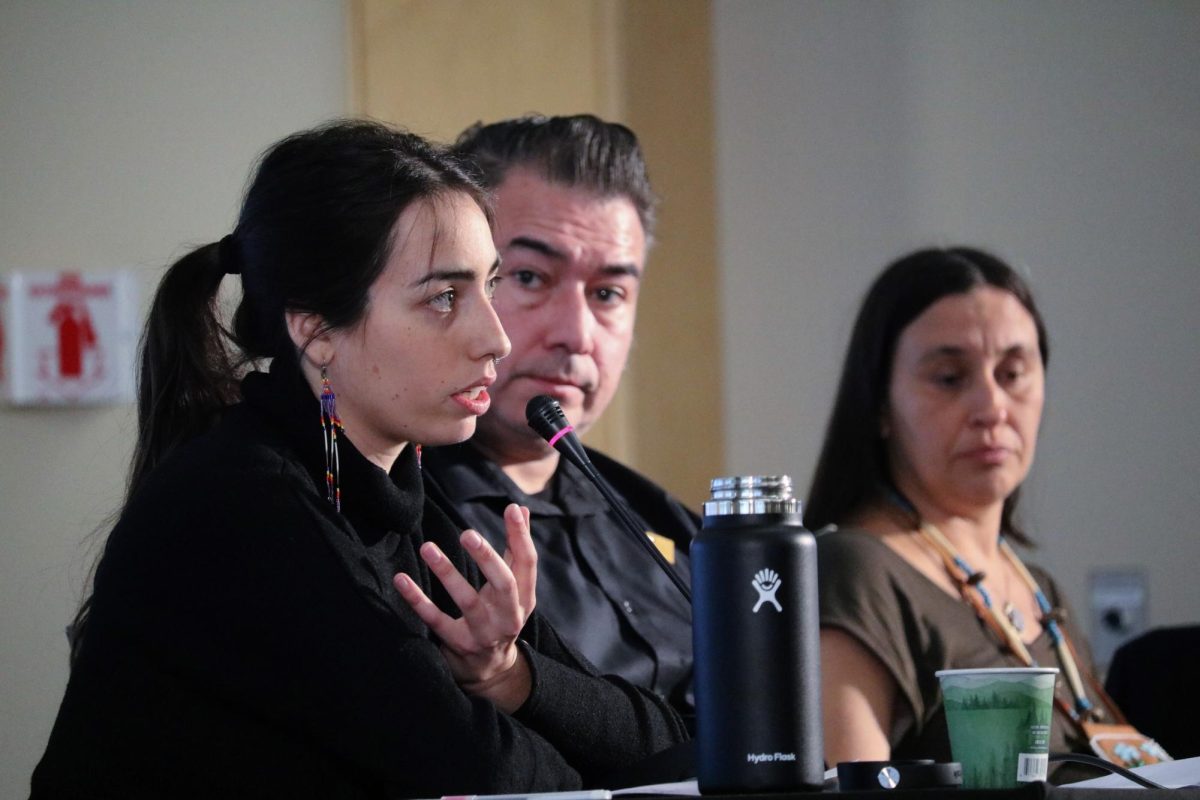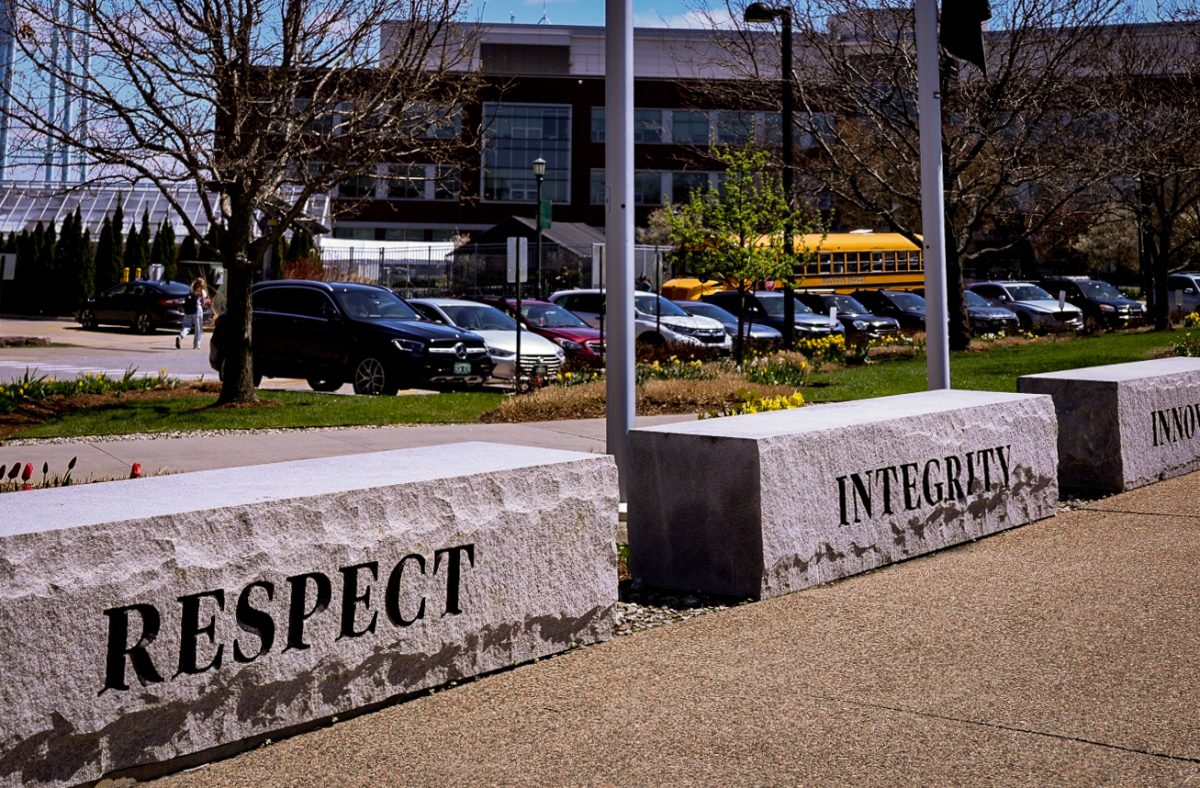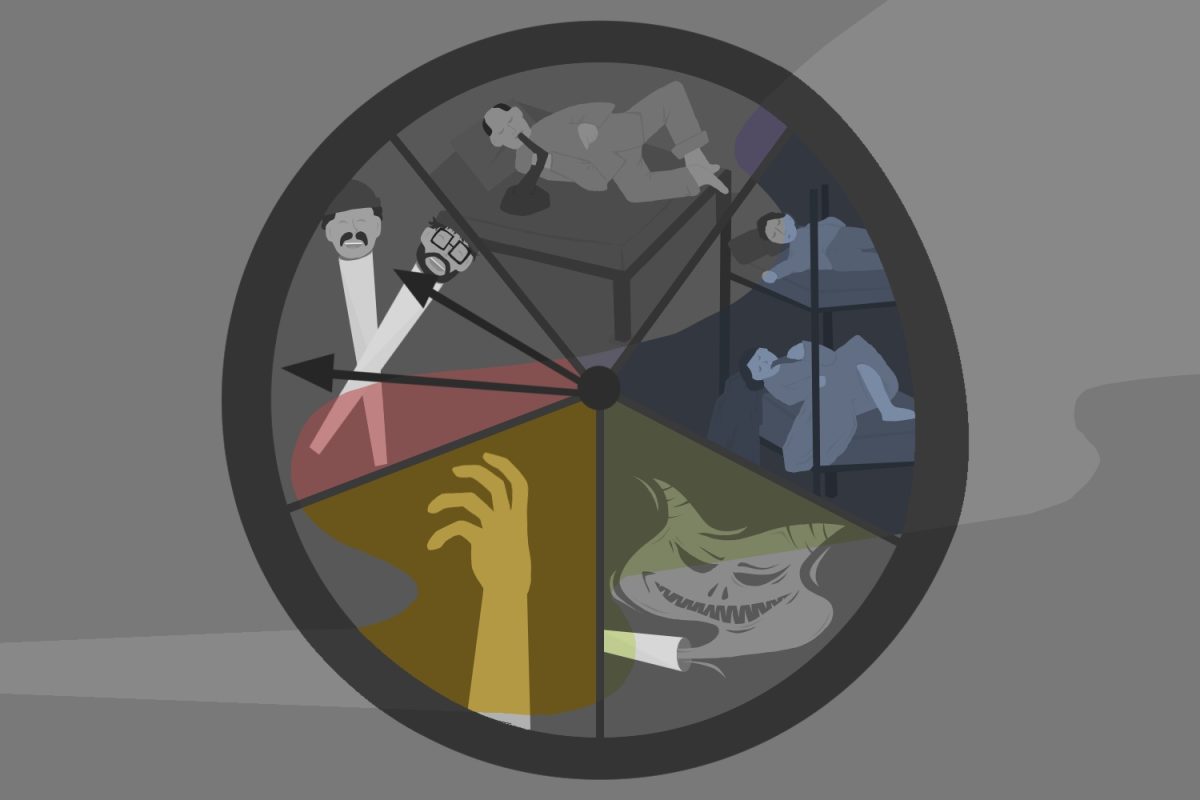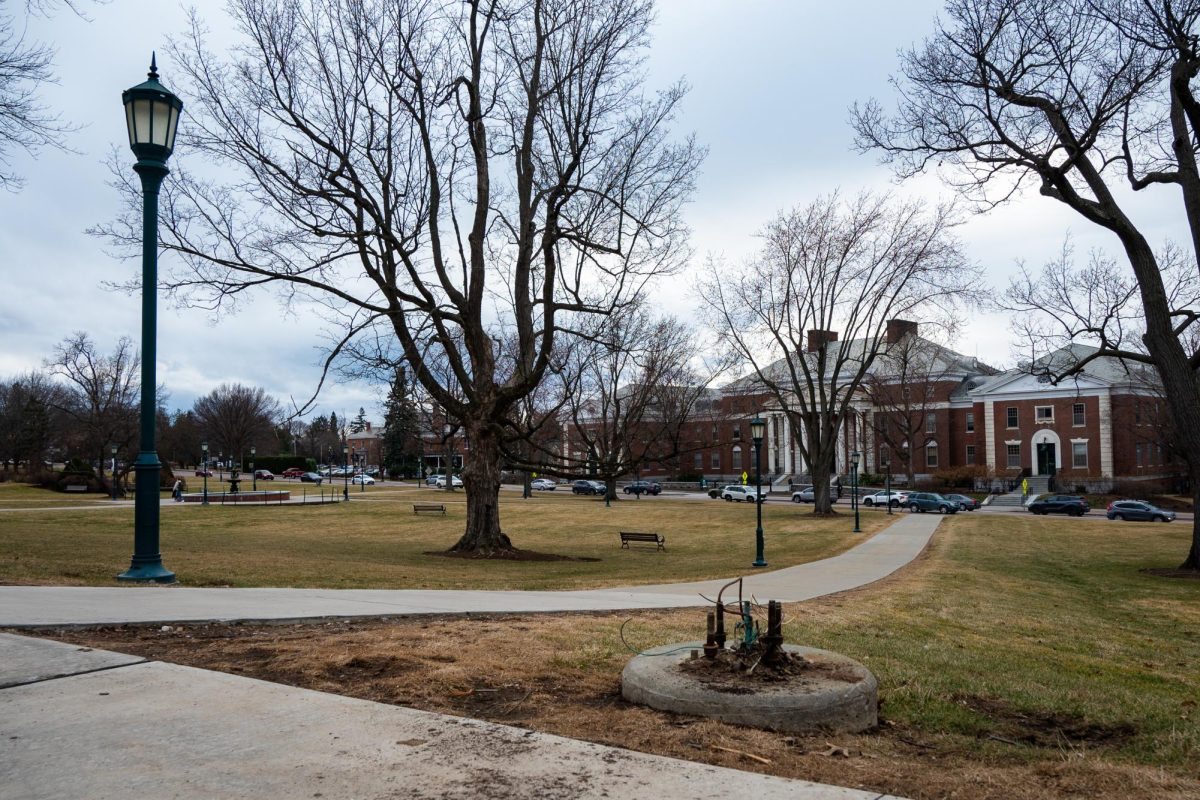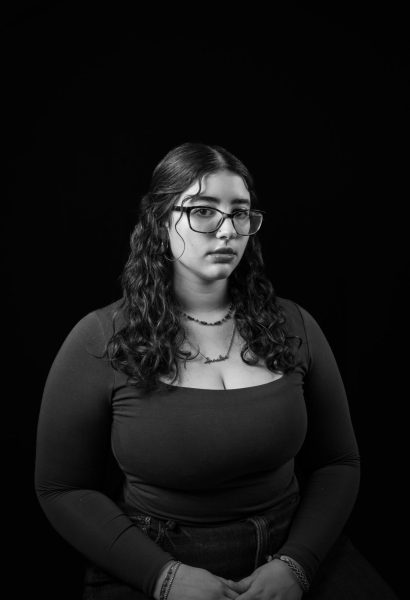In early February, UVM secured a prestigious Research 1 designation from the Carnegie Classifications of Institutions of Higher Education, joining the highest level of U.S. research institutions.
The designation marked a transformative moment for the University.
To secure this prestigious status, colleges and universities must meet two metrics: a minimum of $50 million in research expenditures and awarding at least 70 doctoral degrees annually.
UVM far exceeded these metrics. Two hundred twenty-six million dollars to launch over 1,000 new projects was accumulated in fiscal year 2024 and 78 research doctorate degrees were awarded, according to the Office of the Vice President for Research.
UVM’s Office of Research has around 200 faculty and staff members committed to advancing research and scholarship.
Achieving R1 status has been a coordinated effort for the last five years, but has been on everyone’s minds for longer, said Kirk Dombrowski, vice president for research and economic development. Receiving this recognition was a top goal of Suresh Garimella, the 27th president of UVM, he said.
The effects of this designation are expected to be far-reaching, impacting researchers’, faculty and staff’s working conditions, student admissions and UVM’s impact as Vermont’s land-grant university.
Research
When Sara Helms Cahan joined UVM’s biology department in 2004, she was given initial funding and lab space. With that, she was expected to develop a nationally recognized research program worthy of funding by federal agencies.
“It was kind of a self-service environment. There were some resources available, but a lot of things I had to do myself and figure out,” Helms Cahan said.
Twenty-one years later, Helms Cahan acts as associate vice president for research and as a professor of natural history. As vice president, she works as a mediator between UVM’s colleges to connect researchers and encourage interdisciplinary work.
She also connects faculty to UVM’s evolving research resources including the Office of Research Development and the Programs Administration Office.
“It’s an incredibly intensive process to actually find money [for research]. The estimate is that it’s 127 hours that you have to spend for every single proposal that you put,” Helms Cahan said.
Like all faculty members, Helms Cahan’s job is divided between research and teaching.
“The fact that all faculty at UVM are required to do the kind of cutting-edge research that would lead to external recognition at the national and international level means that every single one of us is asked every day to create high-impact opportunities for students,” she said.
Helms Cahan typically oversees between six and seven undergraduate researchers each during the summer and seeks to build research opportunities for students at all levels. Whatever changes may come from gaining R1 status, Helms Cahan is confident that they will not be at the expense of student education.
“I don’t feel like UVM as an institution is willing to give up on those high-impact experiences to reallocate that money towards things that don’t help students,” said Helms Cahan.
Like Helms Cahan, Pablo Bose, professor of geography and geosciences and associate dean of research and graduate education in the College of Arts and Sciences, said that he integrates research into his teaching.
“For me, I bring the research that I do into the classroom, and that is what my colleagues do as well. [Research and teaching] are not divorced from one another,” said Bose.
Bose currently works with 10 paid undergraduate students to explore the experiences of refugees who have resettled in southern Vermont. Students collaborating on this research learn vital skills in collecting and analyzing administrative, quantitative and qualitative data, he said.
Another unique feature of UVM research is the placement of UVM’s medical hospital on campus, which gives graduates easier access to high level research, said Mark Nelson, chair of the department of pharmacology.
Nelson’s research in blood flow regulation in the brain was highlighted by UVM’s Larner College of Medicine as a key piece of research that contributed to gaining R1 status.
Gaining R1 status has significant implications for medical research and faculty, said Nelson. The status opens up additional funding pathways and draws greater attention to the work and contributions of researchers.
However, these benefits are not shared equally across disciplines, said Ilyse Fuerst, religion professor and director of the UVM Humanities Center. While R1 was earned through joint research in STEM and humanities, Fuerst says it disproportionately benefits STEM researchers who gain access to increased funding opportunities, which the humanities lack.
“R1 tends to matter more for folks doing really traditional lab sciences as compared to literally everyone else,” said Fuerst. “I often find myself as an advocate for humanities work where we’re having to yell that it is legitimate research and not just scholarship or teaching. I’m hopeful that this will change things, but we will have to see.”
Staff and faculty working conditions
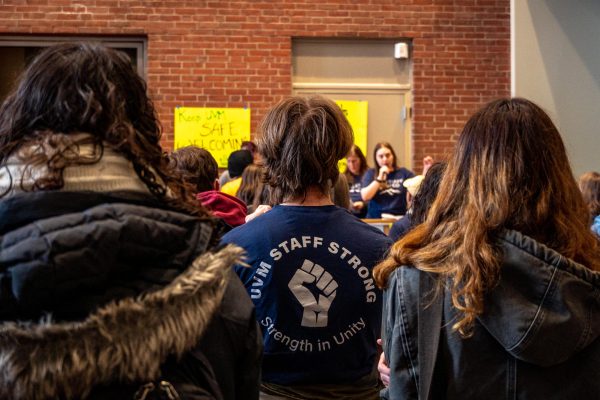
(Annalisa Madonia)
Despite these benefits, the impacts of the R1 designation on staff and faculty members at UVM may not be entirely positive.
“Unfortunately, the reality of what the push for R1 status has meant for most people in our bargaining unit is that we’ve been doing more and more work per person,” said Claire Whitehouse, co-president of UVM Staff United and research project specialist at the Center for Rural Studies.
UVMSU represents the staff of UVM in clerical, technical, specialized and professional positions, according to their website. Currently, the union is over a year into negotiating its second contract with the University, but they have been at an impasse in negotiations since August 2024, Whitehouse said.
Effective March 4, the University has announced a pause of general hiring for all long-term faculty, staff and postdoctoral positions for 60 days, according to a memo shared by UVM Strategic Communications.
“The amount of work has grown, but the number of people has not meaningfully grown at all,” Whitehouse said. “At the same time, over that same time period, our buying power of our wages relative to inflation has actually decreased.”
Whitehouse maintains that if UVM wants to play at the same level of other R1 universities, it must pay its staff and researchers at that level.
“Playing with the big boys requires paying like the big boys,” she said.
United Academics is a union at UVM for full-time and part-time faculty, representing more than 800 faculty members from across the University, according to the United Academics website.
“We are hopeful that what it has taken to attain and maintain R1 status is sustainable in this brave little state,” said Susan Comerford, president of United Academics, in a March 14 email to the Cynic. “Our niche in this increasingly competitive market is the close relationships between faculty and students. These relationships must be maintained.”
Increases in admissions
This R1 status is anticipated to entice future Catamounts at the undergraduate and graduate levels.
“I think [R1] is a recognition of the already impressive research […] happening here at the University, and I think there’s a subset of prospective students that are really seeking that out,” said Moses Murphy, director of undergraduate admissions. “This official designation adds to the level of cache or legitimacy to the opportunities that exist here.”
The R1 designation came after all undergraduate application deadlines passed for 2025-2026, so no shifts can be accounted for in the current applicant pool as a result of the designation.
However, there are newly admitted students whose decision making may be impacted by the designation, Murphy said.
The story is slightly different for graduate students, whose applications are still being accepted for UVM’s over 100 graduate programs.
“We’re definitely doing really well with application volume,” said Jenna Batchelder, director of graduate admissions and enrollment management. The new R1 status is helping that volume, she said.
Currently, there are about 1,700 graduate students enrolled at UVM. Batchelder predicts the R1 designation is going to help reach graduate enrollment goals of 3,000 graduate students in the next three to five years, she said.

(Alec Sugars)
Impacts on the state of Vermont
Vermont is the last state in New England to have its land-grant university receive the R1 designation. Dombroski attributes this to UVM’s intensive undergraduate educational focus, with fewer PhD programs than other R1 universities in New England.
“Overall, in terms of the number of researchers we have, the amount of research dollars we bring in, we’re actually much bigger than [other R1 universities in New England],” Dombrowski said.
The effects of this designation will also be noticeable directly on campus, in Burlington and across the entire Green Mountain State.
“The economic impact of the University on the state, our ability to drive the tech ecosystem around here and our ability to grow a bio-tech ecosystem around here is all built around this, around the research enterprise,” Dombrowski said.
A lot of the research that UVM has done to count toward the R1 designation is designed to interact with Vermont and provide solutions to problems facing Vermonters, said Helms Cahan.
The Leahy Institute for Rural Partnerships connects communities in Vermont with UVM researchers, Helms Cahan said. Community partners can submit problems, which researchers then investigate with the provided grant funds.
The future of research at UVM
An R1 designation typically opens the door for additional funding opportunities for research. However, administrative changes at the federal level have led to uncertainty in federal funding.
“What’s going on right now is a really fundamental questioning of how our research gets funded and what research gets funded,” said Bose.
Despite these federal challenges, Helms Cahan remains confident that UVM will continue to produce high-quality research through innovative sources of funding.
“We may be in for a number of years where there’s a lot of uncertainty,” said Helms Cahan. “But there are options.”
These potential options include partnerships with state government and private foundations rather than federal sources, she said.
In these efforts for pursuing alternative funding avenues, UVM’s new R1 status may open up previously inaccessible funding opportunities, said Dombrwoski.
For Bose, the new R1 status is less significant for UVM than how it responds to changing policies under the Trump administration.
“[R1] happened right in the middle of these big, big changes. I think we will have to have conversations as we move forward about what UVM values in terms of what opportunities there are for graduate students, undergraduate students and faculty alike,” said Bose.


